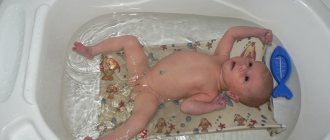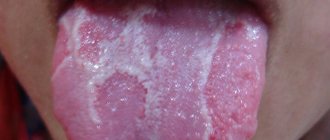general characteristics
Childhood hysteria (hysterical neurosis) is a state of extreme nervous excitement, accompanied by loss of self-control and inappropriate behavior. From the outside it looks ugly and scares everyone around. Most often used consciously to achieve what you want. However, there are exceptions to this rule. Attacks can be dictated by psychological trauma or diseases of the nervous system. In such cases, the help of neurologists and psychotherapists is required.
Despite the fact that most parents know how to stop children's tantrums (ignore them), not everyone succeeds. Sometimes adults take this advice too literally and do not carry out any work at all with a child prone to such attacks. In fact, ignoring is only used in the midst of a seizure. And before and after it, it is necessary to use the techniques and techniques offered by psychologists and psychotherapists.
Causes
The main reason for hysteria is a clash of interests between the child and parents. With age, he develops personal preferences and desires that diverge from the requirements of adults. If you fail to achieve your goal, hysteria begins. There are several typical situations that provoke this condition. They can be caused by psychological and physiological factors.
Psychological on the part of the child:
- lack of opportunity to verbally express dissatisfaction (when one cannot yet speak);
- attracting attention that is not enough;
- an irresistible desire to achieve something;
- expression of protest;
- stubbornness;
- imitation of peers or adults;
- psychotrauma;
- weak, unbalanced type of nervous system.
Psychological from adults (parents, relatives, educators, teachers):
- overprotection, excessive severity;
- incorrect system of punishments and rewards or its absence;
- interruption of a favorite activity;
- violation of personal space;
- mistakes in education.
Physiological:
- lack of sleep;
- overwork, excessive physical or emotional stress;
- hunger;
- diseases of the nervous system;
- illness or rehabilitation period after illness.
To wean a child from hysterics, you must first understand the reasons that drive him. If these are ordinary whims (I want this, buy that), you can deal with them quickly and easily. If the education system is to blame, it needs to be reviewed and radically changed, otherwise there will be no progress. It will be much more difficult and longer to work if psychosomatics or health problems are to blame. In this case, a course of treatment from a neurologist or psychotherapist is inevitable.
Causes of tantrums in children
- Physical discomfort.
Children do not always understand what is happening to them. He feels bad because he is hungry, overtired, sleepy or tired.
- Lack of attention.
If parents rarely communicate with their child during the week, we can assume that by the weekend the child will not remind himself of himself in the best way.
- Manipulation.
The child checks the limits of what is permitted with the help of whims. If you give in and behave once, this will cause them to repeat.
- Excessive guardianship of adults.
Causes a riot. The child requires independence, respect from adults, and recognition as an individual. If you speak with verbs like “don’t touch”, “don’t go”, “put down”. Then you need to reconsider your attitude towards your child and listen to him.
If you see that hysterics may begin soon. Your actions.
First of all, answer one very important question: “can you fulfill your child’s request?”
Two options.
- If the answer is “yes,” then ask the child to calm down and ask normally, with the magic word and without whining. Remember that there should be as few prohibitions as possible; the prohibitions should be clear and justified.
- If the answer is “no” for objective reasons (there is no money to buy or the opportunity to do it, etc.), calmly explain this to the child.
Can:
- Distract the child. This method works best with young children. A big dog, a loud truck, or a black rock can distract your little one from what they want.
- Offer a replacement. We can’t buy you a car, but when we come home, we can arrange a competition or make a car from a construction set.
- Deprive a child of an audience. If your child starts acting up in a store, leave the store. At home, you can leave him alone in the room or just turn away and go about your business.
Signs
Each hysterical child behaves differently during an attack. Someone might just stomp their feet and yell loudly. Others start rolling on the floor. But the most dangerous are those who, by splashing out negativity and aggression, cause damage to themselves and others. Parents need to know how this happens to their baby. This will allow you to take the necessary security measures in a timely manner.
Before hysterics, many seem to “prepare” for the upcoming performance. If you manage to catch this moment, you can prevent an attack. This is signaled by special harbingers:
- slight whimpering;
- snuffling, puffing, grumbling;
- pursed or trembling lips (someone sticks out their lower lip offended);
- a frowning glance from under his brows at the one on whom the satisfaction of desire depends;
- eyes full of tears;
- closed pose (arms clasped in front of you);
- methodically rocking the body (sitting on a chair or just standing);
- nervous, sudden movements;
- red face.
Precursors are not always demonstrated - attacks often begin unexpectedly and abruptly. What does a child usually do when hysterical?
- cries;
- screams loudly until hoarse;
- swings legs and arms;
- stomps, jumps;
- scatters objects;
- breathing heavily, intermittently;
- coughs forcefully and for a long time;
- scratches, bites himself and others;
- hits and pushes those who are nearby;
- bangs his head against the wall;
- is unable to adequately respond to what is said and communicate;
- rolls on the floor;
- lying on the floor, arches his back - the so-called “hysterical bridge” pose, which is involuntary convulsions.
At the same time, he can shout the most offensive things for the person at whom his hysteria is directed: “go away,” “you are bad,” “I don’t love you anymore,” “I hate you.”
At this moment, the child experiences several powerful emotions at once:
- anger, rage, anger, indignation;
- irritation, dissatisfaction;
- aggression;
- despair, bitter disappointment;
- offense.
This is a state of passion during which it is impossible to restrain emotions and control behavior and motor skills. Therefore, even with self-harm (when he hits his head against the wall, bites and scratches himself), the pain is practically not felt.
Watching all this is quite scary. Therefore, adults who witness such scenes should know how to properly respond to a child’s tantrums.
Whims and tantrums
In order to correctly respond to a sharp deterioration in a child’s behavior, it is necessary to understand and distinguish between two different concepts: whim and hysteria.
| Whims - a sudden and unreasoned desire to get something | Hysteria is a real manifestation of feelings and emotions | |
| Baby | wants to get what he wants, sometimes impossible, forbidden | cannot control his emotions |
| Manifests through | screaming, crying, banging your head against the wall or floor | screaming, tears, beating your head on the floor, sometimes arching, involuntary convulsions |
| Description | intentional, conscious | unconscious, impulsive |
What to do
The instructions include several steps.
Interception attempt
To avoid hysteria, you need to:
- Study the precursors (they are individual for everyone).
- Be able to recognize an approaching attack in advance.
- Urgently distract, switch attention to something exciting, interesting.
As distractions, you can use bright books, favorite toys, pets, watching what is happening on the street, looking for goodies in the kitchen, etc. Parents know their baby better and should be aware of what might really interest him. The technique is effective only if the hysteria has not yet begun. It is useless to use it during an attack.
Problem Identification
When the child calms down, it is necessary to find out the cause of his disorder and, having clearly formulated, talk about the problem that has arisen. For example: “You’re angry because I didn’t buy you a doll,” “You’re offended because you weren’t allowed to go out for a walk yet.” First, it will allow him to realize what happened. Secondly, it will teach you to talk about your own feelings.
After this, an explanatory conversation is held about why he did not get what he wanted: “We agreed that we would buy a doll for his birthday,” “We still need to have dinner, wash and play - we wouldn’t have time to do all this if we stayed for a walk.”
Such open, confidential conversations bring children closer to their parents, contribute to the establishment of closer contact, teach them to think logically and be aware of the presence of limiting boundaries that cannot be crossed under any circumstances.
Not everything will work out the first time - at first the child will argue and defend his rights, but gradually realizes the futility of such rebellions and his own wrongness.
Keeping Calm
If you couldn’t prevent the approaching thunderstorm, you can try to stop your child’s hysteria by following these instructions:
- Do not prove anything to him, do not explain, do not educate him, since at this moment he is not able to adequately perceive speech and communicate normally.
- Do not raise your voice under any circumstances.
- Do not use physical force: pulling the arm, shaking, slapping the butt, slapping the head - this will only worsen the situation.
- Do not regret, do not panic that he is in pain (due to the lack of motor control, pain is not felt).
While remaining calm, you need to lean towards the child or sit down in front of him so that your eyes are at his level (in no case should you communicate from top to bottom while hanging over him). In an even, peaceful voice, quietly say the key phrase: “I understand that you are offended, but you can’t behave like that.” She kills several birds with one stone:
- you show him your involvement: you understand him;
- you formulate the problem, helping him to realize his own emotion (resentment);
- remind you of the rules of behavior that should already be instilled.
The peaceful tone of voice and emotional equanimity of an adult should also have a calming effect. If you manage to capture attention, a hug and a kiss on the cheek will help you finally cope with a child’s hysteria. If educational measures were taken before, such actions on the part of an adult will be enough to stop the attack. But what to do if you couldn’t stop it?
Ignoring
If the hysteria continues despite all your actions, the only correct way out of the current situation is to ignore it. This is the most difficult thing for parents. After all, it seems to them that:
- The child is about to have a heart attack, he is screaming so hard;
- he will break and scratch his head and hands until they bleed;
- everyone looks at him and judges him;
- it will never end.
These thoughts need to be discarded. It’s easy to cope with such a panicky mood if you make sure once that a child’s hysteria does not lead to serious consequences (a heart attack or a concussion). Abrasions on the arms and forehead will go away quickly. As for those around you, if everything happens in a public place, think about the fact that you are seeing all these people for the first and last time, so their opinion does not matter. If there is someone you know among them, you can quietly apologize to him. An adequate person will understand that this happens to many people in childhood.
As soon as the child understands that the hysteria had no effect and the adult remained indifferent, he will stop screaming and hitting the floor. When a means to achieve a goal turns out to be useless, he needs to look for a replacement, which he will do, thinking over a new plan.
Attention! The behavior of an adult requires adjustment if the hysteria occurred in a public place where:
- a huge number of people, a tightly packed crowd (in public transport, for example);
- there are old people, disabled people, other small children, pregnant women next to you;
- silence is required (at a performance).
You need to understand that in such situations the child interferes with others and may even accidentally harm them (kick, bite, hit, scratch). The adult’s task is to prevent this from happening and take him away or urgently distract him. The most effective maneuver is the effect of a sudden switch of attention: “Wow! Look who's flying in the sky! Over there! Don't you see? Don’t know who it is?”, “Oh, where did your scarf go? I definitely remember you wearing it! Where could he have disappeared to? You know?". But keep in mind: every time you need to come up with something new. Children are unlikely to fall for the same trick twice.
Summarizing
After the hysteria ends, you should not immediately start scolding the child, educating him, or expressing your displeasure. You need to wait some time. At the same time, try to pay minimal attention to it. But don’t ignore if he asks something and tries, as they say, to build bridges. Be sure to answer, but in monosyllables, reluctantly, demonstrating with your appearance that you are unhappy with what happened.
Psychologists recommend waiting a pause of 15 minutes after a hysteria. If it drags on, it will be useless to talk: short-term memory is responsible for children’s emotions, so 20-30 minutes after the incident they may not remember why it happened and what exactly they are to blame for. It also makes no sense to start a conversation earlier, since the resentment and dissatisfaction will still be too fresh and everything could happen again.
First, the problem is identified and formulated: “You are offended / angry / upset because...”. This technique was described in detail above for stopping hysteria at the initial stage.
After this, it is necessary to draw the child’s attention to the consequences of the hysteria he threw:
- “Look: you scratched your hands / hurt your forehead.”
- “You really scared the girl who was standing next to you.”
- "You made me sad".
- “What you did is bad - you can’t behave like that, you and I have already talked about this. Therefore, you will have to be punished."
He must understand that this cannot be done. Don’t be afraid to punish for tantrums - the carrot and stick system gives its results in education. Of course, this should not be physical violence or deprivation of a walk (= fresh air). What is allowed:
- place for 5-7 minutes (depending on age) in a corner;
- leave him alone for a while to think about his behavior (if there are adults in adjacent rooms);
- deprive of sweets;
- replace your phone (tablet/TV) with a book with an instructive tale;
- go to bed earlier.
If a child learns exactly why he is being punished, believe me, next time he will think carefully before throwing another tantrum.
When do the first tantrums happen?
Usually from one to three years. The most acute period is called the three-year crisis. At an older age (from about 4 years old), hysterics occur less frequently. The child can already express his feelings using words.
Tantrums at 1 year old and at 3 years old are very similar both in appearance and in reasons (failure to fulfill the child’s needs or obstruction of them). However, these very needs of a child are very different at one year old and at three years old. Their motives are different. And, therefore, the ways and methods of dealing with whims and hysterics are different at every age.
The child is 1 year old. Why does he show his character?
So, your child has just started walking. Imagine, now he can touch, throw, tear, knock, hit. And don't just watch. What opportunities! How exciting it is for a young researcher.
At this (very important!) stage of his life, your child is attracted to everything that he can do something with. He will enthusiastically tear apart the newspaper he finds (first he will taste it), quickly scatter the pile of clothes you have folded for ironing, and take out from the table everything that is “badly lying”.
If you want to pass this time calmly, follow these recommendations:
- a minimum of prohibitions (divided into rigid and flexible);
- Every ban must have an alternative. And not just one, but several. (This is not possible, but this, this or that is possible).
- try to distract instead of banning. You need to distract your child with action.
For example, your little one needed a clay pot. Offer him a plastic jar. Show how cool it can be to bang on it or fill it with various toys. Or offer a saucepan + wooden spoon. It will make a very good musical instrument.
- the child wants to explore and learn about the world everywhere, and not in the nursery. Don't deprive him of this opportunity.
For example, in the kitchen you can fill the bottom cabinet with rustling bags of different colors. And in the bathroom you can load various rags and towels into the washing machine.
It must be remembered that there should be much more opportunities for the development of a one-year-old child than prohibitions.
Read here what to do with a three-year-old in the midst of a crisis.
Age characteristics
The most striking hysterics occur at 2-3 years, when the child is still learning to behave, assimilates behavioral norms, tries to assert himself and become independent. However, it is at this age that, with the correct attitude of adults, they quickly stop and do not return (only in extreme cases, under the influence of severe stress). It is much more difficult to cope if they appear later.
2 years
The age when the first real hysterics begin. If before the baby could simply cry, now he does it with defiance and trying to identify the problem. Therefore, it usually all starts with the words: “give, let, buy, want, leave, I won’t...”. He already understands the meaning of the words “no” and “impossible” and tries to protest against them. The speech apparatus is still too poorly developed, so the persuasive power of the word is not available, and with such attacks he tries to convey his desires to adults.
Parents are strictly prohibited from:
- rush to immediately satisfy all his demands, just to stop the hysteria - he will grow up capricious and spoiled;
- screaming and hitting - fear will appear, complexes will develop, or, even worse, physical violence will lead to psychological trauma.
You need to hug the baby, show him your love that you are nearby, ask him to calm down, or simply distract his attention. Usually, such techniques work at 2 years of age. If it doesn’t work, start ignoring it. Next, indicate your dissatisfaction and say that this cannot be done. As a rule, after 5-6 hysterics, when their uselessness is realized, everything ends.
Parents should be wary if, even after all this work, their two-year-old child is constantly hysterical. Most likely, these are no longer just whims, but something psychosomatic. Perhaps he is overtired or feels some kind of discomfort. Review your daily routine and nutrition. Maybe this is how the stress on the kindergarten is expressed. If necessary, undergo a medical examination.
3 years
In psychology there is the concept of “three-year crisis.” The clash of interests between “fathers and sons” is reaching its peak. It seems to him that he is already an adult, he can do everything himself. But he constantly comes across a system of restrictions (you can’t have a lot of ice cream, you can’t sit for a long time at a tablet, you can’t walk through puddles) and the desire of your parents to help with everything (tie your shoelaces, get dressed, make the bed, pour tea). A pronounced protest against all these rules and guardianship begins. Even previously obedient children begin to throw tantrums. Age-related features of attacks:
- The reason can be absolutely any, even the most insignificant situation (mom straightened her shirt collar);
- often parents don’t even understand why it all started;
- up to 10 attacks occur per day;
- the most striking, frightening manifestations of adults.
Parents must understand that a 3-year-old child should have partial independence and the right to choose in some situations (which toy to go to bed with, which shorts to wear). If he hears several times a day how independent and mature he is, he will no longer need to assert himself. The blip in the subconscious will be eliminated - and the hysterics will stop.
4 years
At this age, whims become more conscious and purposeful. In most cases, they are dictated by an incorrect education system. Children 4 years old are smart and observant. Does your mother forbid you to do something? Then you need to achieve this from your grandmother, who will allow her beloved grandson everything, as long as he does not bang his head against the wall. In such cases, it is necessary for all relatives to gather and once again discuss the lists of permitted and taboo items.
Sometimes it happens that a child usually behaves well, understands prohibitions and the word “no”, does not go beyond what is permitted, but from time to time he still throws tantrums for the most insignificant reasons (sometimes even without them). At the same time, he himself cannot clearly formulate his requirements. In most cases, this indicates psychosomatic disorders that require the intervention of a neurologist.
If the disease is not identified, the cause must be sought in relationships with adults. Perhaps he has a conflict with his stepfather or teacher. Family problems cannot be discounted: divorce, constant quarrels between parents, etc. Psychotrauma often manifests itself through hysteria. In these cases, it is necessary to make an appointment with a psychotherapist.
5-6 years
At 5 years old, according to psychologists, the second age crisis occurs. Not as powerful as at 3 years old, but sometimes manifested quite clearly. It is characterized by:
- isolation (stops sharing secrets, increasingly wants to be alone, locks himself in his room);
- self-doubt, fears, phobias, panic attacks;
- mood swings, the appearance of irritability, sudden attacks of aggression and anger (most often causeless);
- tearfulness;
- blindly copying parents, simulating life situations;
- standing up for your rights.
All these factors can become fertile ground for hysteria. Sometimes literally little things are enough to cause an attack. Maybe someone came into the room when they wanted to be alone. Or he behaved like his parents (said a bad word), and he was punished for it. Often ordinary tears develop into a seizure.
According to psychologists, tantrums at 5 years old are in most cases dictated by a lack of parental love and attention. Look at your family from the outside: do you spend all day at work, do you have dinners together, how often do you go out together? To prevent this from happening again, it’s enough to carve out time for your child in your busy schedule.
As for the attacks themselves, self-harm can no longer be left unattended, as in 2-4 years, because it can result in serious injuries. It is urgent to pick up the child from the floor, move him away from the wall, holding him tightly by the hands, and take him somewhere quiet. At the same time, there is no need to babysit (he is already big enough for this) and try to explain something. Wait until he calms down and then have a conversation.
Psychologists advise that if you have constant hysterics at the age of 5-6 years, make an appointment with a psychotherapist.
7 years
Tantrums at 7 years old are most often situational in nature. The first situation that provokes an attack is the need to attend school. The child is faced with a bunch of rules, requirements and restrictions: he has to do his homework, sit still for 40 minutes, follow the bell schedule, listen to the teachers. At the same time, your social circle changes, classmates, new acquaintances, and friends appear. The causes of hysteria are usually:
- basic fatigue;
- emotional stress;
- the authoritarian nature of the teacher’s teaching, if the parents raised the child at home in a calm and gentle manner;
- uncomfortable environment and poor discipline in the classroom, when everyone around is screaming and fighting;
- blindly copying one of your classmates if he threw a tantrum at school.
In this case, you just need to talk with the teacher and school psychologist. They will help resolve the current situation. If the tantrums continue and you are sure that the school is to blame, you should think about changing it.
The second situation that provokes an attack is the family situation. By this time, relations between parents may deteriorate (no one has canceled family crises), or another child appears, or someone dies. The causes of hysteria are:
- open conflicts between parents, quarrels in a raised voice;
- drunkenness, assault, fights;
- jealousy of the younger child, lack of attention and love;
- psychotrauma due to the death of someone close.
In this case, it is strongly recommended to make an appointment with a family therapist.
8-9 years
If hysterics began at such a late age, this is an alarming signal. He has already formed attitudes and rules of behavior: what is possible and what is not. Surely he will not demand a toy in the store in this way. Adaptation to school also ends by this period. The reason most often becomes some kind of psychotraumatic situation: conflict with peers, problems in mastering a subject, nervous breakdown, exhaustion, injustice.
At 8-9 years old, a child already knows how to control his emotions, so experts in such cases abandon the term “hysteria” and talk about a clinical diagnosis - hysterical neurosis. If attacks occur more than 2 times in a short period of time, you must immediately go to a psychotherapist or neurologist.
Consultation with an educational psychologist “Children’s tantrums. How to deal with them"
Irina Akhtyrskaya
Consultation with an educational psychologist “Children’s tantrums. How to deal with them"
Consultation with an educational psychologist
Children's tantrums . How to deal with them .
Raising a child is a very difficult process that requires a lot of time, physical and moral effort. Despite all efforts, in the life of every child there come so-called critical periods that require increased attention from parents. the child’s first tantrums most often appear . Children throw up scandals with crying, screaming, rolling on the floor, waving their arms and legs. Often such excesses are accompanied by a desire to get a new toy or forbidden thing. And if the reasons for hysterics in older children are often clear to parents, such episodes in infants pull the rug out from under their feet and force them to admit their own powerlessness. In fact, the causes of hysterics , as well as ways to eliminate such behavior, almost always lie on the surface. The task of parents is to delve into the situation and try to understand what motivates the child.
A child is hysterical : he stamps his feet, screams, cries and doesn’t want to hear anything. Or he whines, whines and whines monotonously. Every parent has at least once encountered such behavior in their child. But usually the problem is bigger than it seems, affecting 9 out of 10 families who have to raise a hysterical child . And hysterics are not a one-time occurrence, they happen systematically . Moms and dads are at a loss, they are angry, worried, and don’t know how to stop all this. What should adults do if a child is hysterical ?
What is a child's tantrum ?
Hysteria is a special emotional state of extreme excitement. The child screams, sobs, falls to the floor, may hit the walls or scratch his face. Is he completely insensitive to the words and actions of others and practically does not feel pain?
Hysteria , as a rule, although it develops rapidly, like any process in our body, proceeds in several stages. Even if it seems that everything started suddenly, believe me, the symptoms of a beginning “concert”
there were, and you need to learn to recognize them.
Often the baby begins to sniffle, whine, and becomes silent. This is the calm before the storm. If you react in time, hysterics can be avoided .
Sometimes all it takes is to affectionately hug a child who is offended by the whole world and ask what upset him so much. If the problem is a broken toy, offer to fix it together. Timely detection of its symptoms will help you cope with the upcoming hysteria.
The first stage is vocal. The child, trying to attract attention, begins to whine or immediately scream.
The second stage is motor. It is characterized by excited active movements of the baby. He may start throwing toys, stomping, and rolling on the floor. This is the most dangerous stage - the child can be injured.
The third stage is residual. This is a kind of way out of the “pike”
— a physically and mentally tired child bursts into tears, looks around those present with an unhappy look and sobs convulsively. The stage can last up to several hours.
Causes of tantrums in children .
The immediate causes of an attack are quite often: separation from an interesting activity; desire to get a new toy or thing forbidden by parents; the desire to attract the attention of others; attempts to express dissatisfaction; desire to imitate someone; failure to perform a particular activity
Who is prone to hysterics ?
The tendency to hysterics is an innate feature. It all depends on the type of organization of the baby’s nervous system :
Weak type. These are shy, unsure children. They are subject to frequent mood swings. They have an unstable appetite and poor sleep. They are excitable and often raise their voice. They are very susceptible to hysterics , during which they behave unpredictably. They calm down relatively quickly.
Strong type. Guys with this type of nervous system are more often in a complacent mood, easily get carried away, and often do not finish what they start. In a very stressful situation they may throw a tantrum , but this is unlikely. Yes and “repay”
such
hysterics will be quite easy.
Unbalanced type. These are anxious children. They are often tormented by fears and doubts. They sleep "shallow"
sleep, they can wake up several times during the night.
They can be noisy in society, as they love to be the center of attention, but are sensitive to any criticism. Hysteria in such children can begin suddenly and is accompanied by manifestations of aggression.
It is difficult to calm them down. Slow guy. These are very calm, reasonable children. They like to do things alone. They are difficult to rouse. Due to the slow processes of excitation and inhibition in the nervous system , there are practically no hysterics . They could, but by the time it reaches their brain, there is no longer any need to scream.
Thus, most often parents of children with weak and unbalanced types of nervous system children's hysterics .
Night tantrums
hysterics stand apart . They are always involuntary and can be caused by a number of reasons: fears, nightmares, daytime overexcitation and an abundance of impressions. The baby just wakes up and immediately starts screaming. It is difficult to calm him down; he arches his back, knocks his legs and arms, and tries to escape.
If the baby is left unattended, he may be injured. Here it is important to provide tactile contact, eliminate the cause of fears - turn on the night light, remove the frightening object from the room.
Age tantrums
Age-related tantrums are a consequence of the “tuning”
of the child’s nervous system .
At different stages of his life, the baby, as he learns something new, must adapt to this new thing. It doesn’t always work out painlessly, and not for everyone. Children under 1 year of age rarely experience hysteria . hysteria always has its own reason: wet pants, fatigue between periods of sleep, hunger, boredom, etc. At this age, increased intracranial pressure can also be a reason for frequent and demanding crying. A consultation with a neurologist will help confirm or rule out such a problem . Mental disorders at this age are almost impossible to diagnose.
If the child is already 1.5 years old, his tantrums are not yet a method of manipulation, but only a consequence of overstrain of the still unstable psyche. Calming a baby is quite simple. It is enough to take him in your arms and switch his attention.
At 2 years of age, children's hysterics are usually caused by the child's desire to receive more attention from adults. He already knows how to differentiate himself as a separate personality. And often, with the help of hysterics, he tries to explain that he doesn’t like something. Two-year-old children can be capricious from excess impressions, from fatigue, or because of illness. At this age, the birth of another child in the family may become systematic hysterics And very often hysterics happen because of the need to go to kindergarten . How to calm your baby? The method depends on the cause of the hysteria . If he is tired, provide him with rest. If "jealous"
to a brother or sister - pay more attention.
“three-year crisis” begins.
.
“I myself!”
- This is what parents of three-year-old children most often hear.
The kid persistently demands respect for his beliefs, protests furiously, and is hysterical with or without reason . Three year olds are incredibly stubborn. They don't yet know how to compromise. It is difficult to calm them down. In some cases, you cannot do without the help of a psychologist. Guys are great individuals, and an individual approach to their hysterics is required.
Usually by the age of 4, children's tantrums disappear , but if at the age of 4-5 they still happen, this may, unfortunately, indicate gaps in upbringing. If the child does not know the word “no”
or does not feel the boundaries of what is permitted, one cannot blame him for this.
This is the work of adults. The tantrums are already completely controlled, the baby is mastering methods of manipulation: if mom forbids something, then you can ask dad, if he doesn’t give what he wants, grandparents certainly won’t be able to resist hysteria If a child by the age of 4-5 has not been diagnosed with neurological or mental illnesses, then Dr. Komarovsky advises, if possible, to leave a hysterical child alone.
There are no spectators in isolation, which means there is no interest in putting on a performance. At 6 years old, there comes a time of increased demands and rather strict restrictions. The child has responsibilities. He understands the need to behave within the bounds of decency. It’s paradoxical, but true - at this age, hysterics again become involuntary. This is due to the fact that during the day the baby is forced to behave well in kindergarten . But by evening he gets tired. And after kindergarten he throws tantrums . This is protest and the inability to “reset”
nervous tension. You can help him by organizing interesting evening leisure activities.
The crisis of seven years is the second tangible age crisis in a person’s life. At the age of 7, the child moves from junior to school age. He is sensitive to drastic changes in life (the need to study, maintain a daily routine)
.
Hysterics at this age are spontaneous. fight them together with adults, mastering such a concept as “cooperation”
.
At 8 and 9 years old tantrums rarely occur ; they are usually associated with difficulties in the child’s interpersonal communication. If he has difficulty developing relationships with peers and lacks self-confidence, hysterics occur in the form of long or systematic crying . Determine the reason and act. Help your child believe in himself.
Hysteria at the age of 9 and 10 years is rather an exception to the rule. It is usually associated with the transition period - your child becomes a teenager. He can make quite aggressive scandals, fight with peers, or cry for a long time. At this age, hysterics are always arbitrary , deliberate and often associated with a lack of love, including for oneself.
How to behave as an adult if a child is hysterical
Principle One - Stay Calm
Principle two - remain an adult
Principle three - postpone the conversation
Principle Four: Avoid Causes
Principle five - avoid overvoltage
How to avoid tantrums
1. It is important to teach your child to express his problems and dissatisfaction with words, and not throw a tantrum . As soon as the baby starts talking, your task is to instill in him a good habit of talking about his feelings: “The dark scares me.”
or
“I get annoyed when I can’t make an applique
.
2. In case of any hysteria in a child, behave appropriately and remain calm. Say no
your own
tantrums so that the child does not copy your behavior. Pay attention to the climate in the family: quarrels between parents, conflict situations, divorce, depression of one of the family members act like a time bomb. Not immediately, but from time to time the accumulated negativity breaks the dam and spills out in the child in the form of hysterics .
3. Pay attention to the child. 80% of all tantrums occur due to lack of attention.
4. Do not pamper or take care of your child unnecessarily.
5. You should not experiment with ways to extinguish tantrums . The tactics should always be the same.
6. Help your child relax. Decoctions of motherwort and mint tea, a warm bath, and a light massage are suitable. But you should take medications only as prescribed by your doctor.
If the hysteria has already begun...
If the baby is capricious, distract him, find out why he is dissatisfied, try to eliminate the cause of his dissatisfaction. However, the distraction method only works when the hysteria is just beginning . What to do if the child has already entered into an emotional rage?
1. Make it clear that screaming and yelling does not influence you, they will not help change your decision. If the hysteria is not very strong , say: “Sunny, calmly say what you need. I don’t understand you when you scream.” If the hysterical attack is already strong , then you better leave the room. Talk to your baby when he calms down.
2. Try to isolate the child at the very peak of the emotional explosion. If this happens at home, then leave him alone in the nursery , and if on the street, take him to a place where there are no other children or adults.
3. During whims, always behave the same way so that the baby can understand that his behavior is ineffective.
4. Explain how you can express your dissatisfaction in positive ways. From the age of two, teach your child to use descriptions of emotions in his speech. For example, "I'm upset"
,
“I’m angry”
,
“I’m bored”
.
5. Monitor your feelings. Young children are easily infected by other people's emotions. So your aggression can only make the situation worse.
6. Be patient. If tantrums have already become traditional for a child, do not expect that everything will go away immediately after the first time when you leave the room and calmly explain everything to him. It will take some time for the new model to take hold.
Don't be afraid of tantrums in children ; you need to learn to respond to them correctly. If you have already tried all the tips listed in our article and are still seeing angry outbursts in your child, seek professional help.
When to see a specialist
Parents do not always successfully cope with children's tantrums, even if they do everything right. This occurs in cases where attacks are dictated by persistent disturbances in the functioning of the nervous system or psychological trauma. They require the mandatory intervention of specialized specialists - a psychotherapist or neurologist. What signals indicate the need for such a step? If hysterics:
- continue despite all the measures taken by adults, which turn out to be ineffective;
- arranged daily;
- characterized by excessive, uncontrolled aggression, directed at everyone indiscriminately who happens to be nearby;
- accompanied by loss of consciousness, respiratory arrest, shortness of breath, vomiting;
- get a job after 4 years;
- last more than 20 minutes;
- occur at night, accompanied by nightmares and panic attacks;
- end in serious injury and damage to oneself and others.
Night hysterics are considered especially dangerous, requiring immediate intervention from a specialist. Parents should also be wary if, after the attack ends, the child remains in a state of complete apathy for some time, lies down, does not react to anything, is pale and lethargic. This can last 1.5 hours or more.
Additional recommendations
If a child is hysterical, this is the first signal to parents to change their attitude towards him, their education system and their daily routine. What measures will help:
- Maintaining a daily routine.
- Ensuring proper, healthy nutrition in an age-appropriate manner.
- Sports activities.
- Adequate rest without overwork.
- Respectful attitude starting from a very young age.
- Allocating sufficient time for games, walks, leisure, and favorite activities.
- Allows you to show independence (in extreme cases, you can then re-tie your shoelaces and wash the plate).
- Provide the right to choose (wear a yellow or blue T-shirt, go for a walk with your mother or grandmother).
- Organize a calm atmosphere before bed (if he falls asleep hysterically).
Do not deviate from the education system. Among all adults in the family, its main points must be agreed upon. If it is not allowed to sit in front of the TV after ten in the evening, then neither grandparents nor anyone else should violate this rule. The moments at which a child is deprived of the right to choose should be:
- clearly and correctly formulated: it is advisable to avoid the words “must” and “impossible” - they act like a red rag on a bull, but the pronoun “we” is welcome;
- voiced;
- pronounced in a firm voice that does not tolerate argument, but not rudely or harshly;
- constant: they must be regularly repeated in the same wording every time the corresponding situation arises.
For example: “We’re eating porridge,” “Let’s go home,” “We’ll buy it next time,” etc. Every time a child hears such phrases, he will form behavioral patterns that parents need. He must understand that at such moments it is useless to argue and hysteria. This idea needs to be instilled in him constantly. At first, of course, he will protest, but soon he will learn the rules and will treat restrictions, rules and requirements more calmly.
Important information
Constant tantrums in a child may indicate a habit he has developed that allows him to achieve his goals. Probably falling to the floor, sobbing, he may hit the walls, various objects. In most cases, children understand that their parents are ready to give in. They will not stop buying him toys and candy. He is allowed not to go to bed on time, etc.
It should be remembered that when a parent makes concessions, he further contributes to the fact that hysteria is a negative habit. It is in such situations that it will be possible to wean a child from hysterics if you do not pay attention to his crying. Often, when the desired effect does not occur, the baby is able to try with greater force. How to behave? An adult must remain calm, without saying a single word, without betraying his concern with either glances or gestures, so as not to respond to whims or indulge them.
How to respond to children's tantrums? It is forbidden to make fun of them. Punishments are also not applied. It is important to maintain self-control over your own psycho-emotional state. With his own violent reactions, the child will not have the opportunity to understand how to behave differently. Self-control is a good example to emulate.
How to respond to a child's tantrums? After the hysterics are over, there is no need to start talking about it. You can't ask him anything. After the performance ends, behavior should be as if nothing had happened.
How to wean a child from tantrums? There is no need to comment on what happened. The baby will have the opportunity to once again earn the goodwill of his parents. Frequent hysterics can be overcome if you follow this rule. If a child is hysterical for any reason, acting in this way can, over time, reduce the frequency of their occurrence.
It is important that parents act tactfully. How to get a child out of hysterics? It is necessary to initially analyze the reasons for its occurrence, and then move on to action. Only love and care will help cope with the baby.
Tags:Hysteria
We also recommend reading on this topic:
- How to properly raise a boy without a father
- Why do parents hit their children?
- Causes of conflicts between parents and children
- Possible consequences of punishing children with a belt











